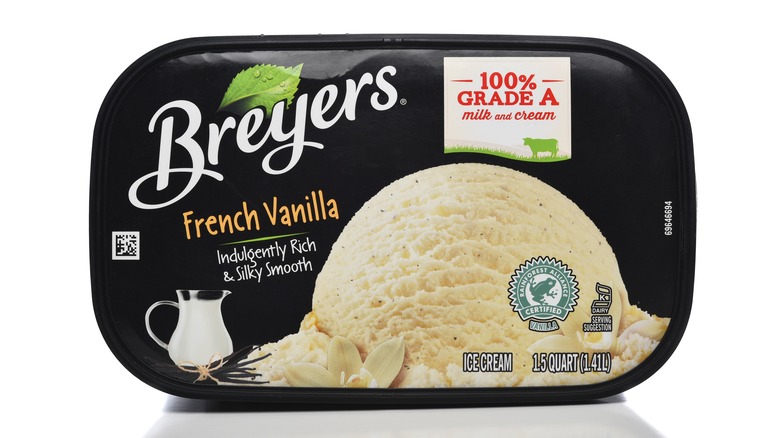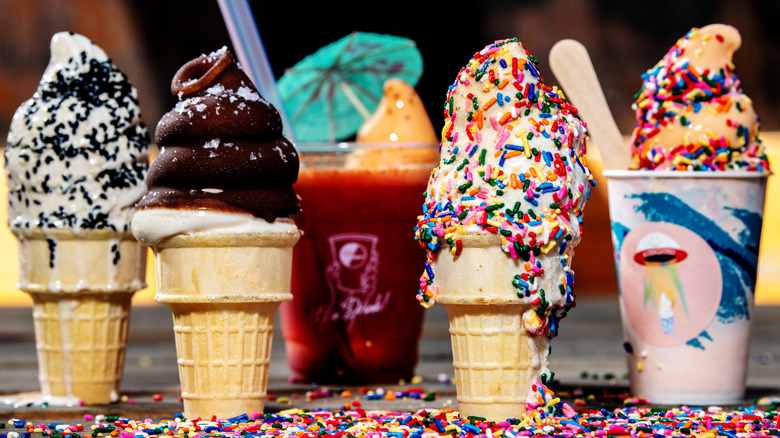Is Breyers Ice Cream The Real Deal?
You may have noticed three little words on products in your grocery's freezer case: frozen dairy dessert. This designation on a frozen product's label indicates that the dessert contains little to no milk or cream as its primary fat base. Non-dairy frozen treats are labeled this way, but the federally mandated practice is causing confusion in the marketplace. Recently, Breyers came under fire with claims that the brand's products can no longer be considered real.
In a viral Facebook post that was later updated, Breyers was called out for its product line now containing "50% air, and has only a tiny percentage of actual milk or cream," causing the line to be branded with the Frozen Dairy Dessert label. While the tone of the Facebook post implied that this was some sort of deception on the part of Breyers, the Frozen Dairy Dessert moniker is enforced by the U.S. Food and Drug Administration or FDA. Title 21 in FDA regulations defines ice cream as a frozen food containing at least one traditional dairy ingredient. These include all varieties of cow's milk, butter, and cream. If a frozen product does not contain at least 10% milkfat, it legally can't be marketed as ice cream.
While Breyers does manufacture products that don't clear the 10% milkfat bar, those products all display the Frozen Dairy Dessert appellation on its packaging. Breyers frozen dairy products include the Carb Smart line of treats with lower fat and sugar content, and its non-dairy offerings. Otherwise, Breyers still makes officially legal ice cream; the company's website clearly indicates which foods are ice cream and which are not.
All ice cream is full of air
While the 50% air claim on Facebook about Breyers sounds outlandish, it can technically be true for any frozen dairy dessert. Air is added to ice cream during production to keep its structure and enhance its texture. Ice cream is an emulsion of various liquids that will not stay intact without a certain degree of aeration and manipulation of milk protein. The percentage of expansion caused by adding air to a batch of ice cream while it freezes is known as overrun. Along with milkfat, the FDA also somewhat sets guidelines for overrun within Title 21. For a frozen dessert to be federally considered ice cream, it must contain at least 1.6 pounds of total solids per gallon.
This might seem similar to the corporate process of shrinkflation, which is filling chip bags with more air than crunch, but overrun is necessary to create an edible frozen product. The greater the overrun, the lighter and fluffier the finished frozen product appears. Without air, the liquid mix would turn out overly dense upon freezing and wouldn't melt as smoothly. Soft serve ideally has an overrun of 50-60% to achieve its unique texture. In the case of Breyers, its vanilla ice cream is noted to contain about 45% air in the total volume per half cup.

